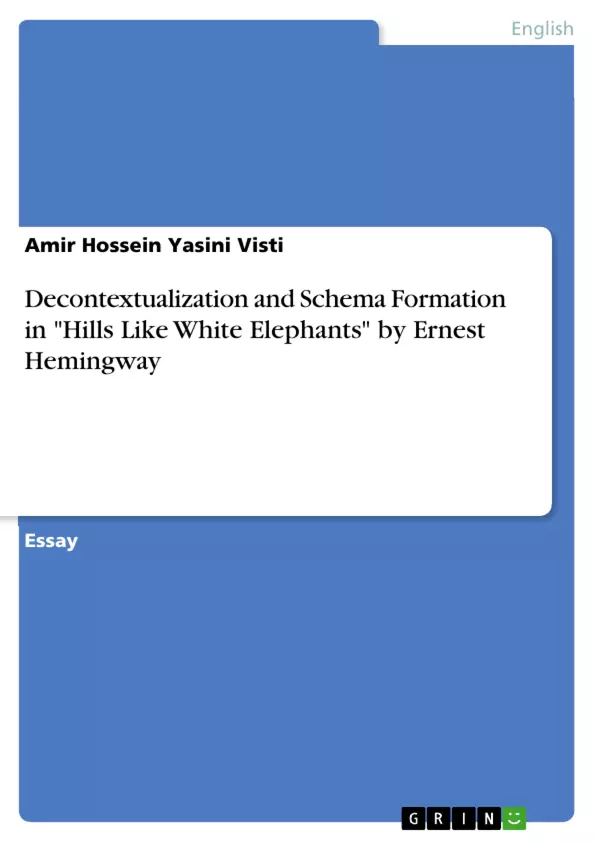This paper intends to show how the short story "Hills Like White Elephants" by Ernest Hemingway represents the schema formation that takes place through devices of the Critical Discourse Analysis. Closely connected to the idea of "decontextualization", the schema theory is accounted as a part of the "discourse" studies.
In fact, it helps reveal how a discourse comes into being, how it controls and is controlled, how it acts and relates to other discourses, and how it disappears. In this paper, this mechanism is delineated in a literary work, as a discourse, by investigating on the confrontation of some CDA’s elements including the situation and the mode of communication, characters’ voices and identity issues.
To illuminate, in "Hills Like White Elephants", conversation is served as the mode of communication between the two characters. However, the author’s narration describes the situation – especially the place, of the story to both symbolic function and balancing the mood and the tone of the story. Also, the schema formation is shaped by the voice of the man in the story; it is refreshed when opposed to the girl’s voice.
The two voices act as the creator of the two schemata. The other schema duality lies in the two opposite identity forces latent in the identities of the man and the girl. While the man thinks of getting rid of any familial responsibility, the girl’s major concern is her instinctive femininity, creating the opposite schema.
Inhaltsverzeichnis (Table of Contents)
- I. Introduction
- II. Methodology
- III. Discussion
- IV. Result
- Works Cited
Zielsetzung und Themenschwerpunkte (Objectives and Key Themes)
This paper aims to analyze the schema formation in Ernest Hemingway’s short story “Hills Like White Elephants” using the framework of Critical Discourse Analysis (CDA). The objective is to demonstrate how the story reflects the interplay of identity, discourse, and power dynamics through the conversation between the two main characters.
- Schema formation as a critical discourse analysis tool
- Identity crisis and its representation through conversational dynamics
- The role of voice and communication in shaping meaning
- The interplay of situation, context, and cultural forms in discourse analysis
- The relationship between identity and inequality in a social context
Zusammenfassung der Kapitel (Chapter Summaries)
I. Introduction
The paper introduces Hemingway's "Hills Like White Elephants" as a story about identity crisis, focusing on a conversation between a girl and a man at a train station. The man attempts to convince the girl to have an abortion, leading to an inconclusive debate. The chapter emphasizes the use of CDA elements like situation, conversation, voice, and identity to analyze the work.
II. Methodology
This chapter examines the concept of "discourse" as a crucial element in various fields, including sociology, history, and literature. It defines discourse as statements that shape our understanding of the world and connects it to the theory of Critical Discourse Analysis. The chapter highlights the work of scholars like Jan Blommaert and Brian Paltridge in understanding discourse and its relation to language, context, and cultural forms.
Schlüsselwörter (Keywords)
The primary keywords and topics explored in this paper include discourse, schema, Critical Discourse Analysis, Ernest Hemingway, identity, voice, conversation, communication, and situation. The paper utilizes these concepts to analyze the interplay of power, identity, and meaning formation within the context of a literary work.
- Quote paper
- Amir Hossein Yasini Visti (Author), 2014, Decontextualization and Schema Formation in "Hills Like White Elephants" by Ernest Hemingway, Munich, GRIN Verlag, https://www.grin.com/document/384246



